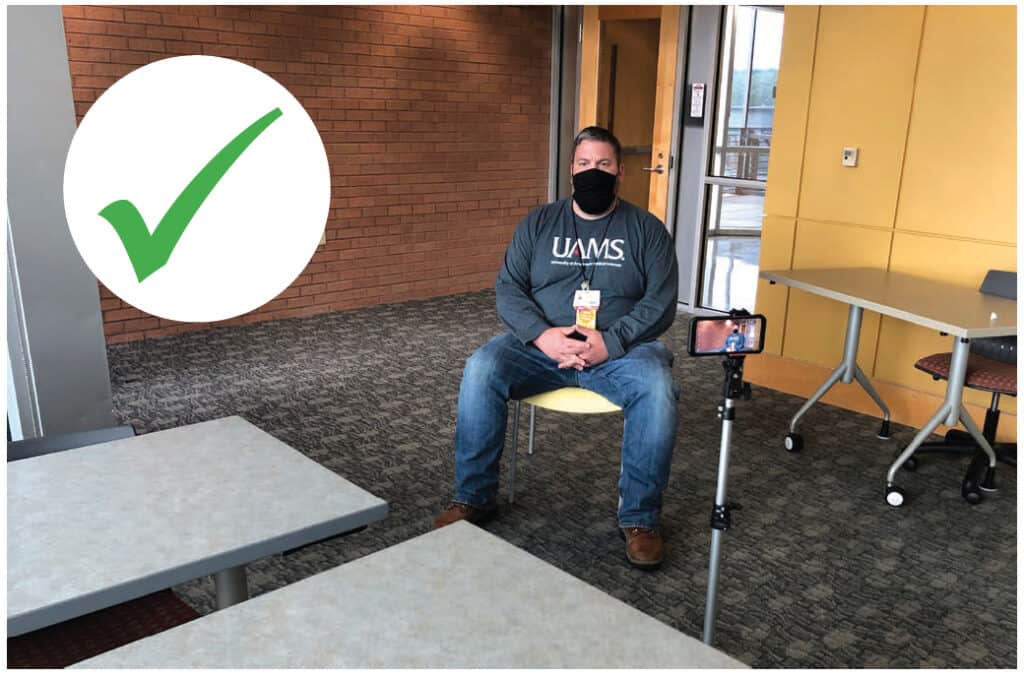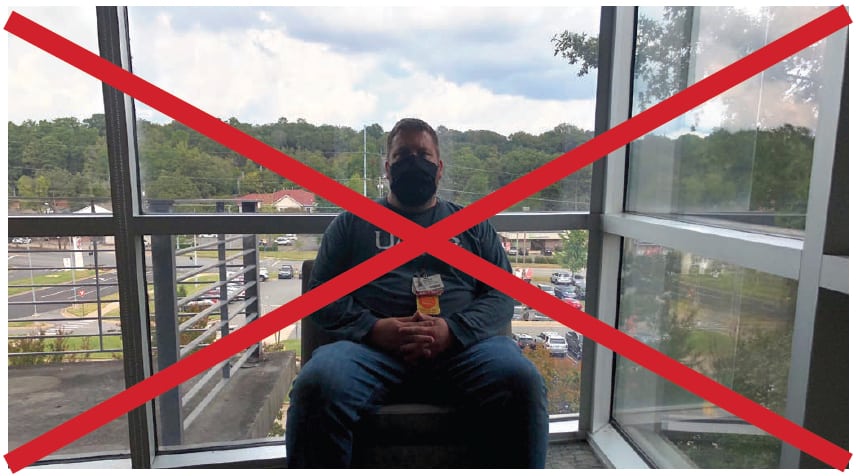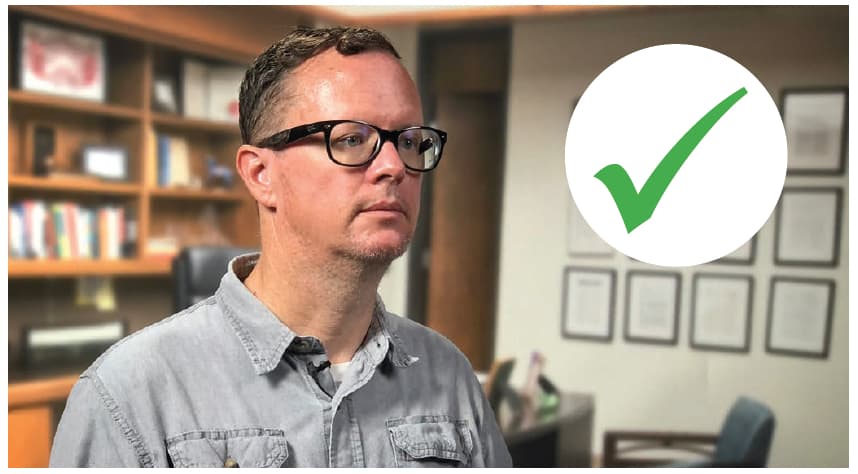Making the Most of Your Video
This guide is to help UAMS staff film video interviews when a staff videographer is unavailable. The most important components to a successful video are the sound, the lighting, and the setup.
Sound Quality and Other Equipment
The sound quality and lighting can make or break your video interview. Here are a few pieces of equipment you should consider purchasing.
Possibly the most important component, after the camera or phone, is an external microphone, which will vastly improve the final quality of the sound recorded. High-quality sound is crucial to producing a professional finished product. A tripod is another good investment, as it not only eliminates the need for another person to hold the camera, it frees up the second person to give the on-camera talent someone to talk to. Most people are more relaxed talking with a colleague or friend, versus the camera or a blank wall. A tripod can help eliminate this challenge.
Equipment Options
Any of these or similar items can be found at your favorite online retailer.
- iPhone wired lavalier microphone
- iPhone wireless lavalier microphone
- Android type C connector
- Android wired lavalier microphone
- Android wireless lavalier microphone
- Tripod
Setting the Scene
When scouting locations for a video interview, you want to select a quiet, well-lit, open interior space. It’s great if you can use window light to illuminate the subject. If that isn’t possible, think about using a table lamp as your main light source. You don’t want to place the subject directly in front of a window. That will cause the camera to underexpose the person being filmed.
Overexposure is the result of too much light hitting the film or, in a digital camera, the sensor. Overexposed photos are too bright, have very little detail in their highlights, and appear washed out.
Underexposure is the result not enough light hitting the film strip or camera sensor. Underexposed photos are too dark, have very little detail in their shadows, and appear murky.
Dress Code
Collared shirts are preferred. They allow for better placement of the microphone and look more professional than a T-shirt. Scrubs or other uniforms are acceptable in clinical and occupational settings. For example, a nurse in scrubs being interviewed on their hospital wing, physical therapist in PT uniform in a clinic. Or culinary staff interviewed in a kitchen or dining area dressed in a chef’s coat.
If filming in a lab, applicable PPE’s for that lab are not required unless you are working or simulating lab work.
Video Examples
The following photos show you both best practices and things to avoid when setting up and conducting video interviews.

- Line the camera up at about neck height of subject. You don’t want the subject speaking directly to the camera, so position them at a diagonal: Have the person at about 20 degrees off camera, or between 11-1:00 if you think about the face of a clock.
- Try to select a clutter-free background or make it clutter free before shooting.
- Take off your badge. Badges need to be removed prior to filming.
- Masks are not required unless two or more people are on camera. The camera crew and off-camera interviewers still need to observe COVID protocols.
- A lower third title will identify the person on screen. Not wearing a badge will make for a cleaner on-screen presentation.
Be Aware of Your Background

You should move the furniture out of the way to clean up the area that will be on camera. The camera should be approximately 4 feet from the subject.
Back Against the Wall

Ideally you will position the person being filmed 10 or more feet in front of the wall behind them. Being too close can create shadows, and your video clip will lack depth in the scene. White boards are also to be avoided. They are reflective and often have writing that can be distracting.
Backlit

More often than not, if you place your subject directly in front of a window, you will be unhappy with the result. The light coming in will be brighter than the room lights, which will cause the camera to underexpose the subject making them too dark. The camera isn’t close enough in this shot. Choose a chair that encourages the subject to sit up straight. Slouching on camera is never flattering. Do not sit with your legs wide apart.
Lavalier Microphone

It is best to have your subject wear a collared shirt on camera. The microphone should be 8-12 inches from the person’s mouth. Notice the cord from the microphone has been hidden by running it under the shirt.
If you need additional assistance, please contact Evan Lewis or Kenneth Childres.
